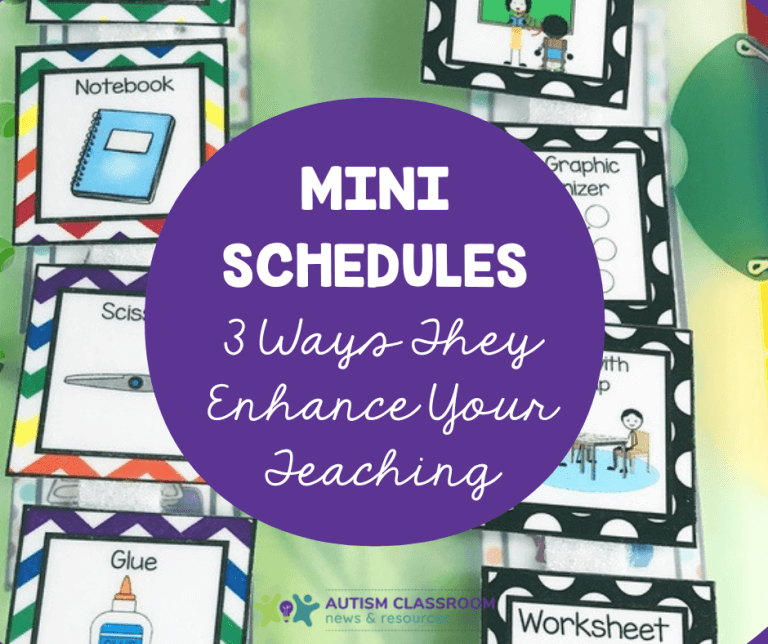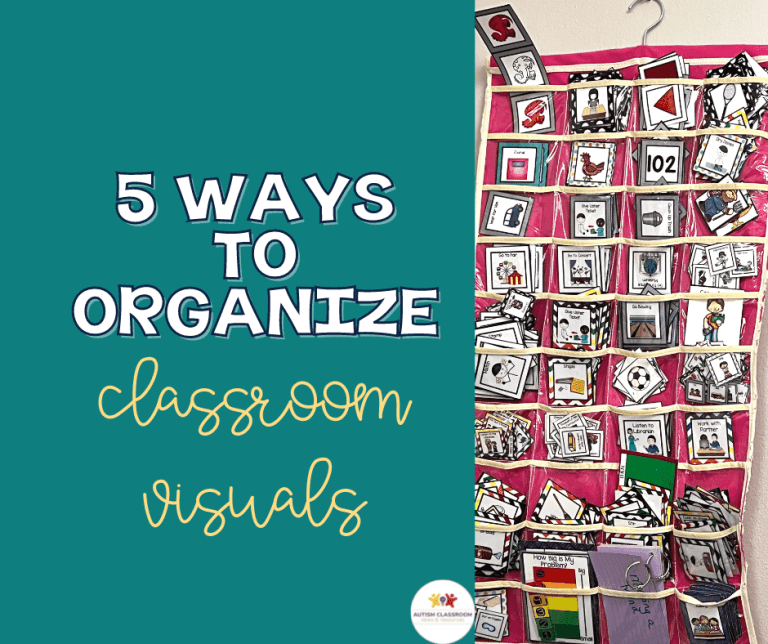In this series about schedules, I have talked about the importance of schedules, individual schedules and group schedules. Today I want to talk about the need for mini-schedules. Sometimes these are called picture task analyses, sometimes they are referred to as a schedule within a schedule, sometimes they constitute a to-do list. To make it easier to discuss, I’ve broken them down into 2 categories: schedules of activities within an activity and task analyses for completing routine tasks. Both are task analyses, but the first is essentially breaking down the activities that will take place in a larger activity while the second are typically the steps to complete a task like arrival, brushing teeth, or a play scheme. In other words, it would be the difference between a mini-schedule telling a student to play with Legos, play kitchen, and blocks in the play area, versus a schedule that gives the steps for a play scheme of washing the dishes in the play kitchen.
5 Things to Think About with Mini-Schedules for Tasks
- They foster independence. Once the series is taught, these visuals help students to complete daily tasks independently without someone there reminding them of each step. One of the characteristics of autism, as well as many children with special needs, is that they come to depend on someone telling them each step of a task. It starts because we use those prompts and then are not successful at fading them out. A picture strip is something that can be left with the student without an adult being there so that it fosters independence. If the student still needs them when he goes out into the community, you could make a small one, put it in his wallet or pocket and teach him to take it out and refer to it when he needs it (e.g., public restroom). The picture in C is actually a hall pass for a student to take to the bathroom. On the pass we put the visuals of her bathroom routine so that she took it with her to the bathroom and we didn’t have to leave it in the girls bathroom down the hall. She moved the picture from the left to the right when she completed each task.
- They need to be taught. Just like any type of schedule, putting it up isn’t sufficient to teach the student to use it, unless he or she already knows how to do the task. You have to teach them to use the pictures by pointing them out and making them relevant.
- They help staff to teach steps consistently. All of us complete different activities in different ways. When I ask training participants to work together to make a task analysis to make a peanut butter sandwich, it’s amazing how many variations they come up with. Imagine that a student who needs lots of consistency is being taught by 3 people who all have him complete the task in different ways. Learning the task will take that much longer.
- Let the visual do the talking. When I use mini-schedules, I want the student to attend to the visual, not my talking. So, I give the direction (e.g., wash your hands) and then I point to the schedule to show the student to the steps and I don’t say them out loud. This makes it easier to fade yourself out of the task and it teaches the student to do the whole task when given the direction.
- Visuals fade out more easily than verbal prompts, but don’t fade them out too soon. OK, this is really 2 items, but they are both equally important and I like lists of 5! It’s easier to fade visuals than verbal prompts because you can put them on the copy machine and make them lighter, or shrink them and make them smaller, or change them all together to fade them out. However, as with all schedules, make sure that you don’t fade them out when they are still needed. If you fade them too quickly, the student will lose his independence.








